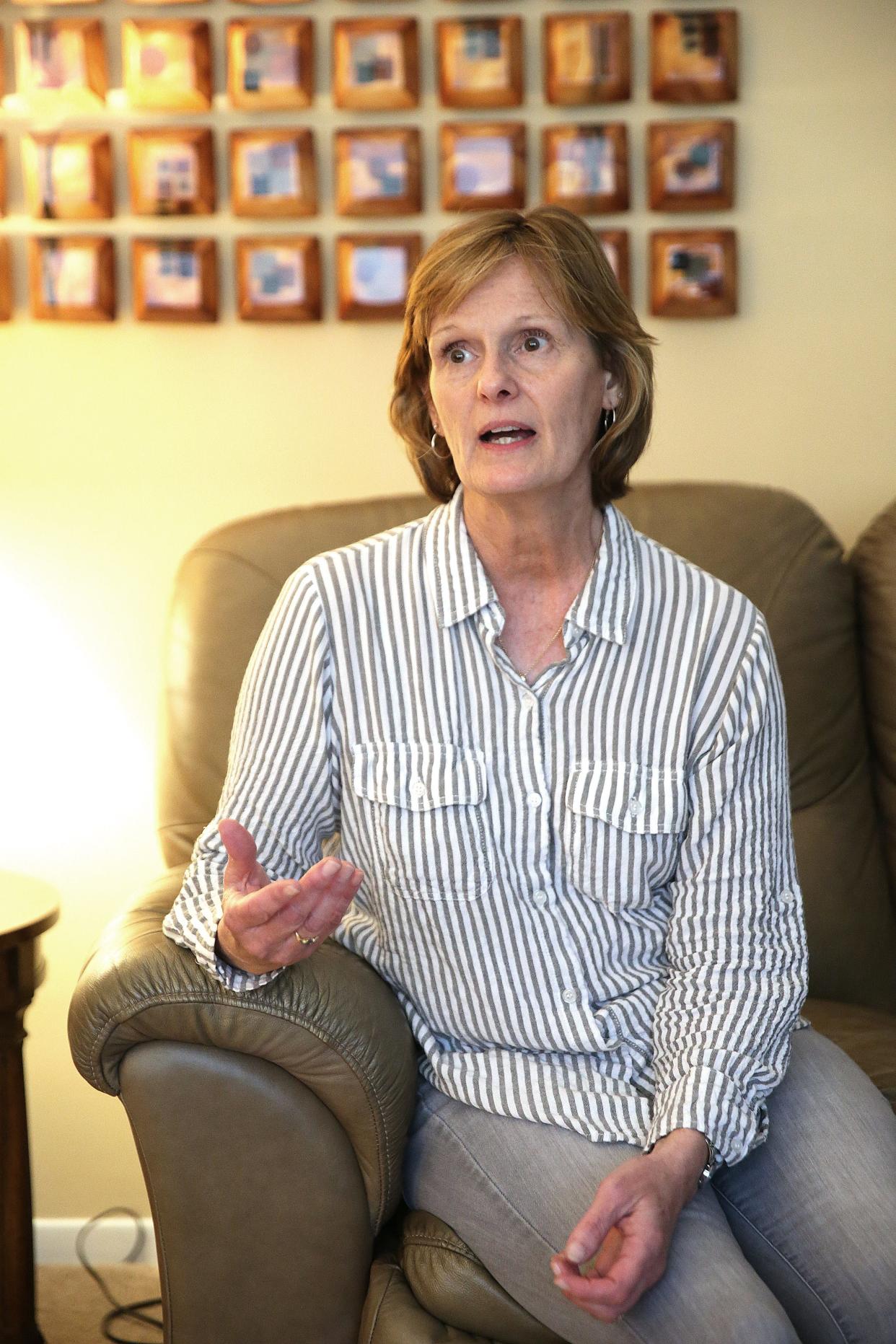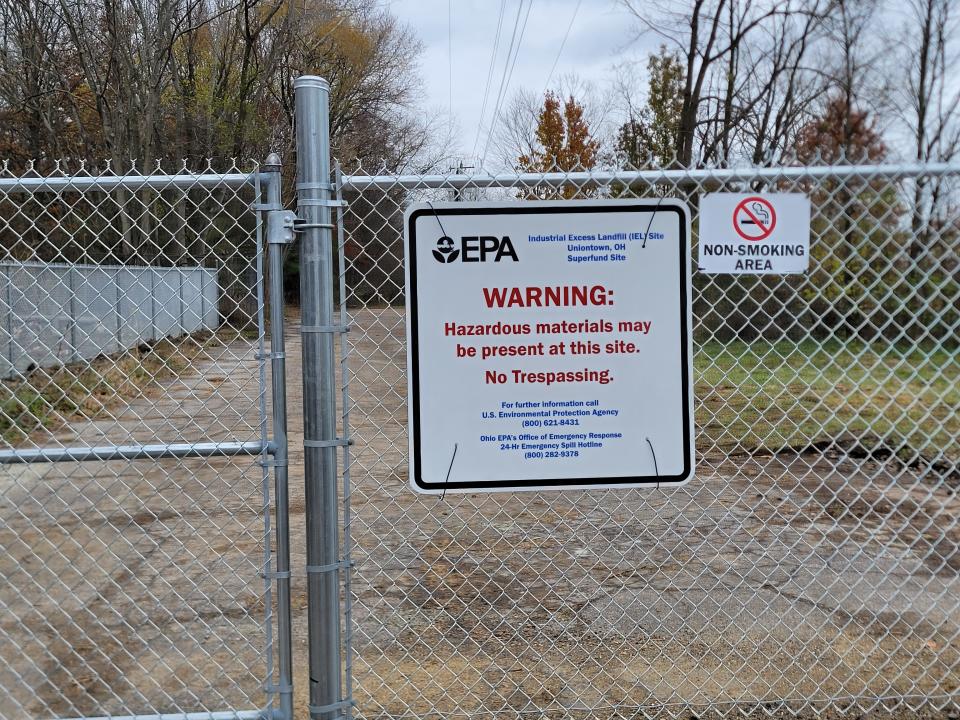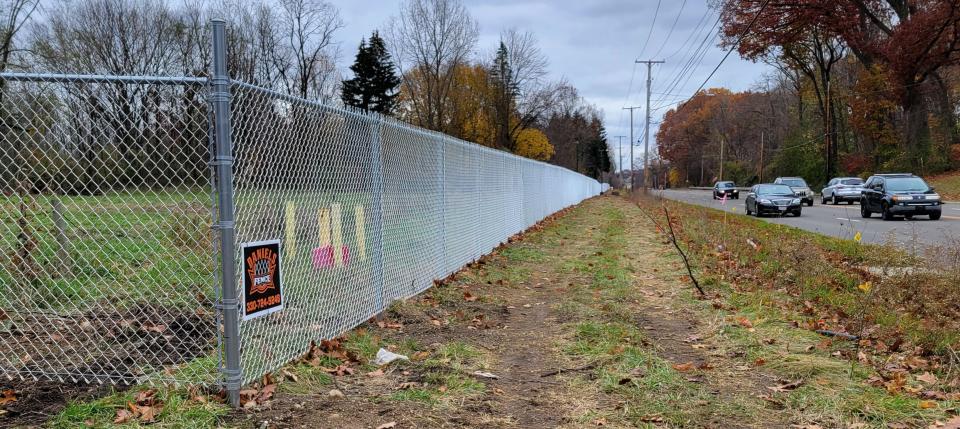Lake Township properties connected to city water during U.S. EPA investigation

LAKE TWP. – Seven properties have been connected to municipal water as part of the U.S. Environmental Protection Agency's groundwater investigation around the former Industrial Excess Landfill.
The testing of private wells for "1,4 dioxane," a synthetic industrial chemical that likely is a carcinogen, is ongoing west of the site. EPA spokeswoman Rachel Bassler said more properties with "unacceptably high results" in late May are expected to connect to a municipal water system. (Information has been corrected to fix an error. See correction at end of story. 1 P.M. / JUNE 9)
"To date, 50 private wells have been sampled," she wrote in a May 24 email. "In many of these private wells, the preliminary data indicate there is no detectable dioxane contamination. With EPA oversight, the PRPs (potentially responsible parties) will continue to sample additional wells ... until dioxane is no longer detected."
More: U.S. EPA investigating groundwater west of former Industrial Excess Landfill in Lake Twp.
On June 2, the city of Green announced that dioxane also was detected in wells near the Stark County border. The EPA notified the city in May that its groundwater investigation included properties near state Route 619 or East Turkeyfoot Lake Road, and 12 of 33 wells have tested positive for the contaminant.
Dioxane is a solvent stabilizer and a byproduct of manufacturing and cosmetic products. The EPA considers dioxane an "emerging contaminant" because it was not detectable in groundwater until recently and has no federal cleanup standards.
The chemical was "tentatively identified" in 2019 at seven monitoring wells as part of the latest five-year review. Its presence was confirmed in January, and the testing of private wells followed.
The "potentially responsible parties" include B.F. Goodrich, Goodyear Tire & Rubber Co., Bridgestone/Firestone and GenCorp. Bassler said they've covered the costs associated with the EPA investigation and residential hookups, and will continue monitoring wells near the 30-acre site southeast of Cleveland Avenue NW and Hilltop Street NW.
Sand and gravel were mined at the location until 1966, when the mining pit was converted into the Industrial Excess Landfill. It accepted waste from Akron's rubber companies, area hospitals and septic tank cleaning companies until 1980.
The EPA put it on the Superfund National Priorities List in 1984, and about 100 nearby residents were connected to municipal water in the early 1990s.

Mixed resident reactions about U.S. EPA investigation
Beth and Thomas McAlonan, who have lived on Sunset Circle NW for about 40 years, were having work done to connect to city water in mid-May. The EPA contacted them a few weeks prior about testing their well water.
"So they came out right away and tested it, and then they said that we would get notified," Beth McAlonan said.
In the meantime, the McAlonans were given bottled water and told not to shower with tap water. They were advised to connect to city water a couple days later because results showed a "higher than normal" level of dioxane, Thomas McAlonan said.
His sister, who grew up there in the 1970s, has had breast cancer twice, and the McAlonans know of 11 people in the area who've had cancer in the past 30 years. They themselves have never noticed an issue with the well water or corresponding health effects.
The McAlonans opted not to connect to city water in the 1980s when concerns seemed to be greater in neighborhoods to the south. Beth said she thought their well water came from a natural spring across the street and flowed toward the former landfill.
"It tasted great," she said. "We were happy with the well."
Ethel Garrison also is pleased with the well water at her Sunset Circle NW house, where she's lived since the 1950s. She received requests from the EPA to test her well but said she's used the water for decades and is not concerned about potential health effects.
"I'm still alive," Garrison said.
The 88-year-old said she thinks her water is "clean as a bell" and doesn't plan to hook up and start paying a city water bill now.
"I don't need it, and I'm not going to do it," Garrison said.
Paula George, another Sunset Circle NW homeowner, said her well was tested earlier this year and shown not to be contaminated. Despite disliking city water, she opted to connect while costs are covered.
"I was a little bit further north than everybody else, so it probably hadn't gotten here," she said. "And there was really no other choice because I'm sure the contaminated water would get to my well."
Since the hookup, she said, the higher water pressure has caused plumbing leaks at her old house.
"I've had the house since '84," she said. "So actually, I bought the house, I did not know the dump was there."
Lake Township's administrator reported no calls from residents during the most recent work related to the former landfill.

Concerned Citizens not happy with Industrial Excess Landfill action
Chris Borello, who founded Concerned Citizens of Lake Township but doesn't currently live near the former landfill, remains concerned that not enough is being done to protect residents. She said she'd like to see shallow monitoring wells reopened at the site and groundwater tested all around it.
"We're very, very worried about where they're not looking," she said, referencing U.S. Geological surveys from the late 1980s and early 1990s that show groundwater flows outward in all directions.
According to the 1994 report, regional groundwater flows east to west but is affected by mounds at and around the site.
"Groundwater flowing to the east and south flows toward Metzger Ditch, whereas flow to the west joins the regional groundwater-flow system," the summary states. "Groundwater flow north from IEL is diverted east or west by the southerly component of groundwater flow from the mound north of IEL."
Studies by Sharp & Associates Inc. after 2000 and the elimination of some monitoring wells reported a general east to west pattern more representative of shallow groundwater flow, according to a 2004 review of complaints by the U.S. EPA's Office of Inspector General.
"However, it is also important to recognize that groundwater flow and recharge conditions during the time of waste placement were likely much different than what occurs today, where a large portion of today’s precipitation is dissipated through evapotranspiration and/or as surface run-off," according to the review completed by P.E. LaMoreaux & Associates Inc. at the request of the EPA.
They also describe the possibility of contamination moving offsite before the first groundwater investigation began in 1986 — about 22 years after the landfill began accepting waste.
In response to a question about the possibility of reopening sealed wells, the EPA spokeswoman said the 2003 remedial design plan established 29 monitoring wells of varying depths.
"Historical wells from earlier investigations that were not selected for use in the monitoring network were properly abandoned following the state of Ohio guidance and cannot be unsealed," Bassler added.
Michael Ketterer, a professor emeritus at Northern Arizona University and environmental consultant who has worked with Concerned Citizens of Lake Township, also criticized the sealing of those wells.
"I think it's kind of nefarious," he said. "... A regulatory agency that's supposed to protect the health and the environment says, 'Well, well, we don't want to know about the contamination so we're just going to decommission the monitoring wells and we're not going to monitor any contaminants in the groundwater and everything is fine.'"
Borello and Ketterer also question whether there are other contaminants in the area's private wells, and Ketterer wrote the EPA about measures he felt should be taken following the most recent five-year review. In addition to dioxane, he posed questions about per- and polyfluoroalkyl substances (PFAS) and anthropogenic radioactivity.
"I never really got a response at all from them other than, 'Thank you for your comments,'" he said.
Bassler, in a response to The Canton Repository, said private wells nearest the landfill were tested for other contaminants of concern (COCs), such as chlorinated solvents, metals and PFAS.
"This private well data is still under review," she stated. "These additional COCs are routinely monitored in off-site monitoring wells and have not been detected off-site above cleanup standards during recent biennial sampling events."
Correction: The Stark County Engineering Sanitation Department operates the small municipal water system near the Industrial Excess Landfill. The municipality was incorrect when this story was first published.
This article originally appeared on The Repository: EPA investigation into Industrial Excess Landfill continues
